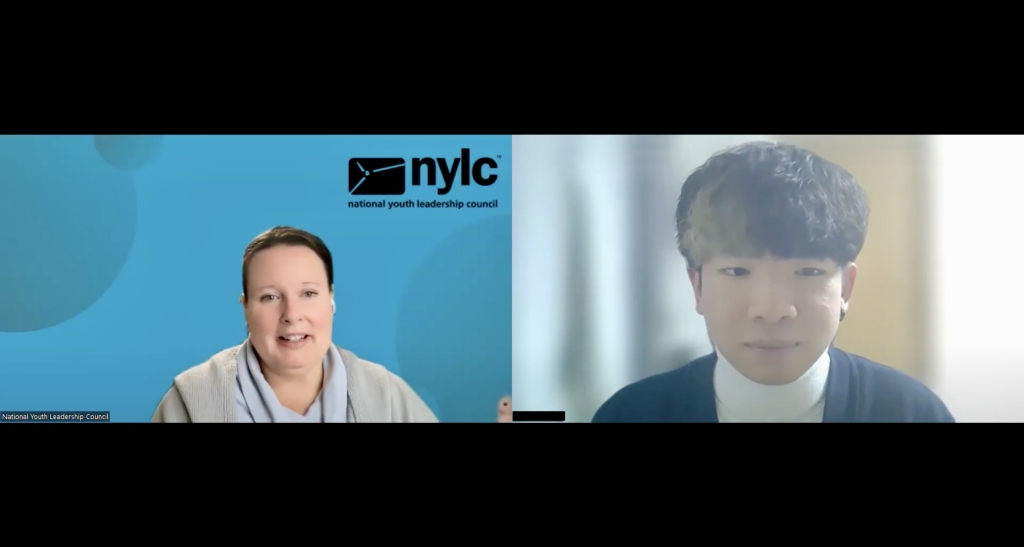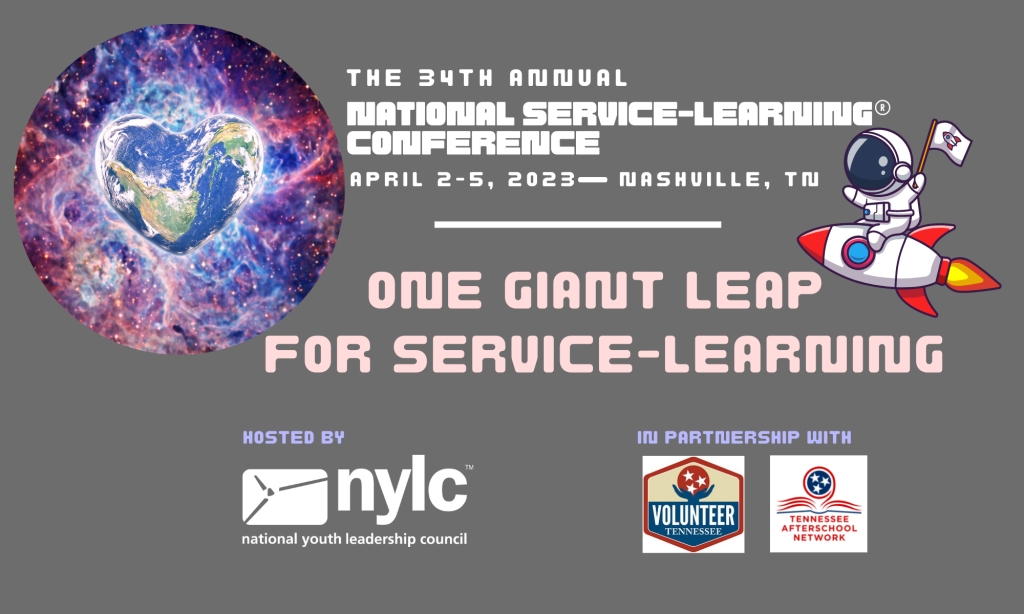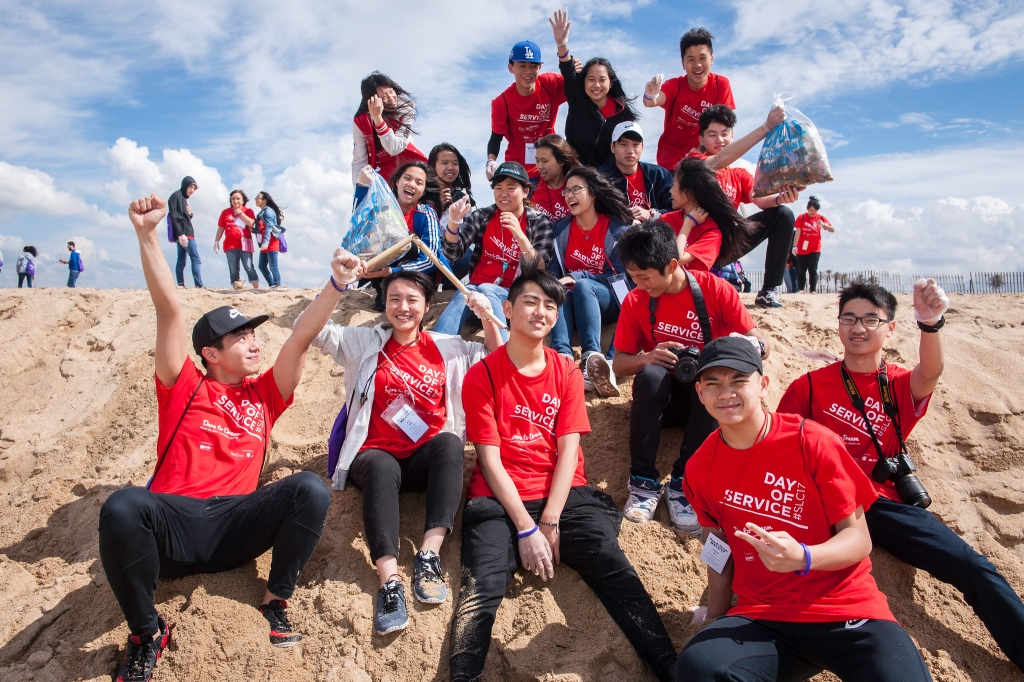社会貢献チャレンジ
これまでに全国49地域、120校以上の学校で
社会貢献教育のプログラムが実施されました
Introduction
While this website aims to introduce cases of service learnings mainly in Japan, it is also crucial to see and make comparisons between cases from other countries too. In this interview, Kan (intern at Japan Fundraising Association [JFRA]) interviewed Ms. Amy Meuers, the CEO of the National Youth Leadership Council (NYLC), one of the leading service-learning providers in the United States. As an advocate of service learning in Japan, the interview was quite interesting and had some parts that could be applied to Japan. I hope you enjoy it!
Ms. Amy Meuers: A CEO of the National Youth Leadership Council (NYLC).
Kan: An intern at the Japan Fundraising Association (JFRA), and an interviewer of this interview.

Establishment Of NYLC
Kan: It is such a pleasure to have a chance to interview you today. To begin with, I would first like to ask you about the background of establishing the NYLC.
Ms. Amy: Our founder, Dr. James Kielsmeier was working in St. Louis, Missouri, USA bringing students from different backgrounds together in a leadership camp during a time of school integration. Students would find their common background and talk about the issues that they cared about and build community. This was a really successful youth leadership camp model. So, the University of Minnesota invited him to the state of Minnesota and from there, Jim established the National Youth Leadership Council. NYLC learned quickly that young people would have amazing experiences and go home wanting to change the world. However, things start to fall apart lacking adults’ support. It was in the 90s that we became one of the leading experts in the field of service learning to better support young people and adults wanting to make a change in the world.
Kan: Thank you for that kind introduction of the council. The division between races and ethnicities has been a problem for a long time. And after 40 years, I guess the world is much more globalized making it easier to communicate despite the border. Based on such social changes, do you think that there are still such problems today?
Ms. Amy: I think that’s an interesting question. There is still many challenges today that students of color experience in the U.S. which white students do not understand. I believe every student has a unique perspective and experience that needs to be honored and recognized. Therefore, the integration of schools isn’t the challenge but the understanding of systems of oppression is the real problem. Histories that don’t reflect everyone’s experience, narratives that favor one population over another. Those are the challenges that exist. So, it’s similar but different.
Projects
Kan: When I looked at your website, I saw a lot of things that your organization does to pursue your vision. So, would you tell me some of the examples of projects that you do?
Ms. Amy: We work with young people in a couple of different ways. We have a National Youth Advisory Council (NYAC); a group of young people who work with us over the course of two years. They are in high school and their ages range from thirteen to seventeen years old. They address an issue area that they care about. We provide them training on service learning and then they have the opportunity to speaker at conferences and events, write articles, create social media, and develop resources. So, they work very closely with us, and actually, two of those young members sit on our board of directors as full voting members.
The other program that we do directly with the young people is called Youth as Solutions. This is our national program where teams of students and their adult leaders tackle issues like community health, education equity, and teen driver safety. We provide both funding and professional development through monthly training, resources, and coaching.
We also work with school districts and after school programs and with government agencies. The training and technical assistance we provide is personalized to support classrooms and programs in meeting student outcomes. For example, right now, we are working to create youth councils across the state of California.

Kan: Since I am also running a community of service learning mainly for students from the 7th grade to the 12th grade, I just want to make a little comparison with cases in Japan. In Japan, one of the biggest obstacles to service learning is that students do not fully understand the importance of service learning. This led the government to integrate service learning into the national curriculum making it mandatory for students to engage in some sort of service learning. This case symbolizes how hard it is to expose students to service learning, and what I wanted to ask you is how does your organization try to expose students to service learning, especially those who are not interested in it?
Ms. Amy: I think the most important thing is not just sharing the importance of taking action in your community with adults. It’s also about talking about that with students and not saying “this is what you have to do”, but “what are the issues”: “What do you see in your community?”, “What bothers you?”, “What are those things that you care about and that you want to address?”. So, for NYLC, it’s really about youth voice and youth choice. And digging deep into the root causes of what we’re seeing in our community and tapping into that helps us connect to what we’re seeing and why we’re seeing it. And then, we get to take actions to make changes to something that we connect deeply with. Reflecting on the experience connects us back to all of the learnings that happens during the service-learning experience.
Being Part of a Community
Kan: To wrap up this interview, I would like to ask you what you expect from the future generation, especially those who have undergone service learning.
Ms. Amy: My hope and the hope of the NYLC is that when students have these powerful service-learning experiences, that they continue to be part of their community, to continue wanting to make positive change. Not because it’s required, not because it’s part of their schoolwork, but because they care deeply and passionately about making the world a better place. That’s what we want. That’s why we do this work. We know young people can make positive changes in this world. They just need opportunities. And service learning opens the door to how they can do that. They don’t have to do it as part of their classroom if they know how to investigate an issue and how to plan and prepare to take action. And when you are constantly reflecting, you learn and grow. The service learning process can be used to make change wherever you are. That’s what we want.

Student s cleaning beach as their service learning activity
To Wrap Up...
That was the interview with Ms. Amr Meuers, the CEO of the NYLC. It was quite an interesting chance for me to communicate, as a person to enforce service learning in Japan, with an expert in that field in the United States. I found some parts are similar, while soma parts are different, making me believe that there are more things that can be done in Japan.
Lastly, I would like to sincerely thank Ms. Amy Meuers for accepting this interview despite her busy schedule.





